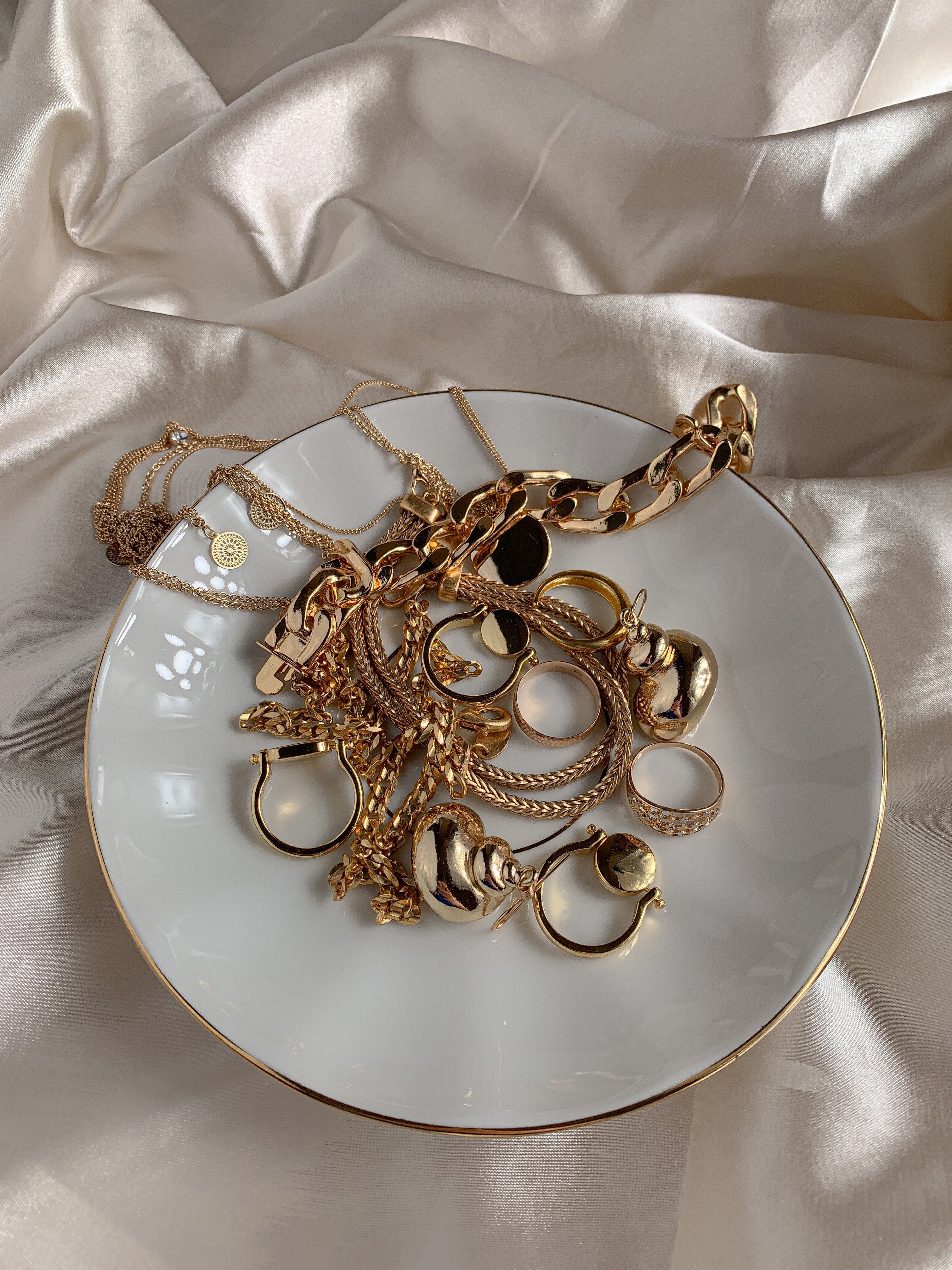
By Occasion
By Gemstone By Design
By Occasion
By Occasion
Gifts By Recipient

Article: How To Clean Jewellery

How to Clean Your Jewellery At Home (The Ultimate Guide)
There's a strong possibility that all of your jewellery, from the simple pieces you wear every day to the expensive items you save for special occasions, might benefit from a nice cleaning. While some individuals clean their jewellery frequently, others don't clean it at all.
It's advisable to use caution when cleaning your jewellery because pieces can be fragile and delicate. Here are a few tried-and-true methods and advice for keeping your jewellery safe and looking gorgeous.

Firstly, It is essential to remove any jewellery before engaging in activities such as dishwashing, showering, swimming, working out, or sleeping. Despite the fact that many people neglect to do so, it is necessary to remove jewellery when there is a risk of it becoming dirty or moist. Even while applying skincare or hand lotion, it is recommended to remove any jewellery to prevent the accumulation of moisture and soap residue in the jewellery's crevices, which may result in potential problems.
To prevent premature tarnishing, silver jewellery should be stored separately in a velvet-lined container, away from other metals and jewellery. Similarly, gold jewellery should be kept in a velvet-lined jewellery box to prevent moisture build-up, oxidation, and tarnishing.

Fine jewellery requires gentle handling. Therefore, a simple wash should do the trick.
Even though it's the most basic cleaning procedure, almost every piece of jewellery should benefit from it. For a lot of the items, especially fashion jewellery or jewellery made of pure gold, you could discover that's all you need to do.
Warm water and a mild liquid soap free of colour and aroma should be used to wash your jewellery. Any mild hand soap without moisturisers, antiseptics, or harsh chemicals should work, including castile soap, woolens soap, and gentle hand soap.
To assist remove dirt from crevices, use a cloth or a brush with soft bristles. Be cautious not to immerse delicate stones like opals or pearls for an extended period of time because this might harm them.
Finally, before putting the jewellery back into storage, pat it with a soft cloth and let it air dry fully.
You can simply use a silver polish or create your own solution. Grab some aluminium foil, baking soda, salt, and water to clean silver jewellery. Aluminium foil with the shiny side up should be used to line the bottom of a large disposable pan.
Put the jewellery on the pan with the foil in contact with it. Salt and baking soda should be added to the pan. It’s around one tablespoon of salt and baking soda for every cup of water, depending on how much water you are using. Then, fill the pan with hot water until all of the jewellery is submerged.
In the solution, leave the jewellery for around 10-15 minutes, or until the tarnish begins to visibly fade. The jewellery should then be gently removed, thoroughly dried with a lint-free towel and left to air dry fully before being placed back into storage.
If dirt and dust are difficult to remove from complex pieces of jewellery, consider purchasing an inexpensive ultrasonic cleaner and following the directions. It will be quite effective in removing dirt and debris, even from locations that would normally be inaccessible.
Although an ultrasonic cleaner won't remove tarnish, it will perform wonders on intricate items that have many nooks where dirt can collect and stick.
Reminder: Use sparingly as it may tarnish some finishes and soft gemstones.
So use it with caution!SHOP NOW
EXTRA 20% OFF - CODE: EXTRA20
EXTRA 20% OFF - CODE: EXTRA20
EXTRA 20% OFF - CODE: EXTRA20
EXTRA 20% OFF - CODE: EXTRA20
EXTRA 20% OFF - CODE: EXTRA20
EXTRA 20% OFF - CODE: EXTRA20
EXTRA 20% OFF - CODE: EXTRA20
EXTRA 20% OFF - CODE: EXTRA20